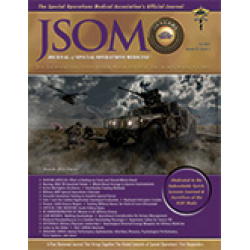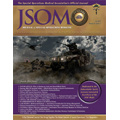Active Warfighter Resilience: A Descriptive Analysis
Barczak-Scarboro NE, Cole WR, DeFreese JD, Fredrickson BL, Kiefer AW, Bailar-Heath M, Burke RJ, DeLellis SM, Kane SF, Lynch JH, Means GE, Depenbrock PJ, Mihalik JP 22(3). 22 - 28 (Journal Article)
Purpose: Our aim in this study was to psychometrically test resilience assessments (Ego Resiliency Scale [ER89], Connor-Davidson Resilience Scale [CD-RISC 25], Responses to Stressful Experiences Scale [RSES short-form]) and describe resilience levels in a Special Operations Forces (SOF) combat sample. Methods: Fifty-eight SOF combat Servicemembers either entering SOF (career start; n = 38) or having served multiple years with their SOF organization (mid-career; n = 20) self-reported resilience, mild traumatic brain injury (mTBI) history, and total military service. Results: All resilience metrics demonstrated acceptable internal consistency, but ceiling effects were found for CD-RISC and RSES scores. ER89 scores were moderate on average. ER89 scores were higher in SOF career start than mid-career Servicemembers (ηρ2 = 0.07) when accounting for the interaction between SOF career stage and total military service (ηρ2 = 0.07). Discussion: SOF mid-career Servicemembers had similar ER89 resilience scores with more total military service. The SOF career start combat Servicemembers had higher ER89 measured resilience with less total military service only, potentially showing a protective effect of greater service before entering SOF. Conclusion: The ER89 may be a more optimal military resilience metric than the other metrics studied; longitudinal research on SOF combat Servicemember resilience is warranted.


 English
English 




